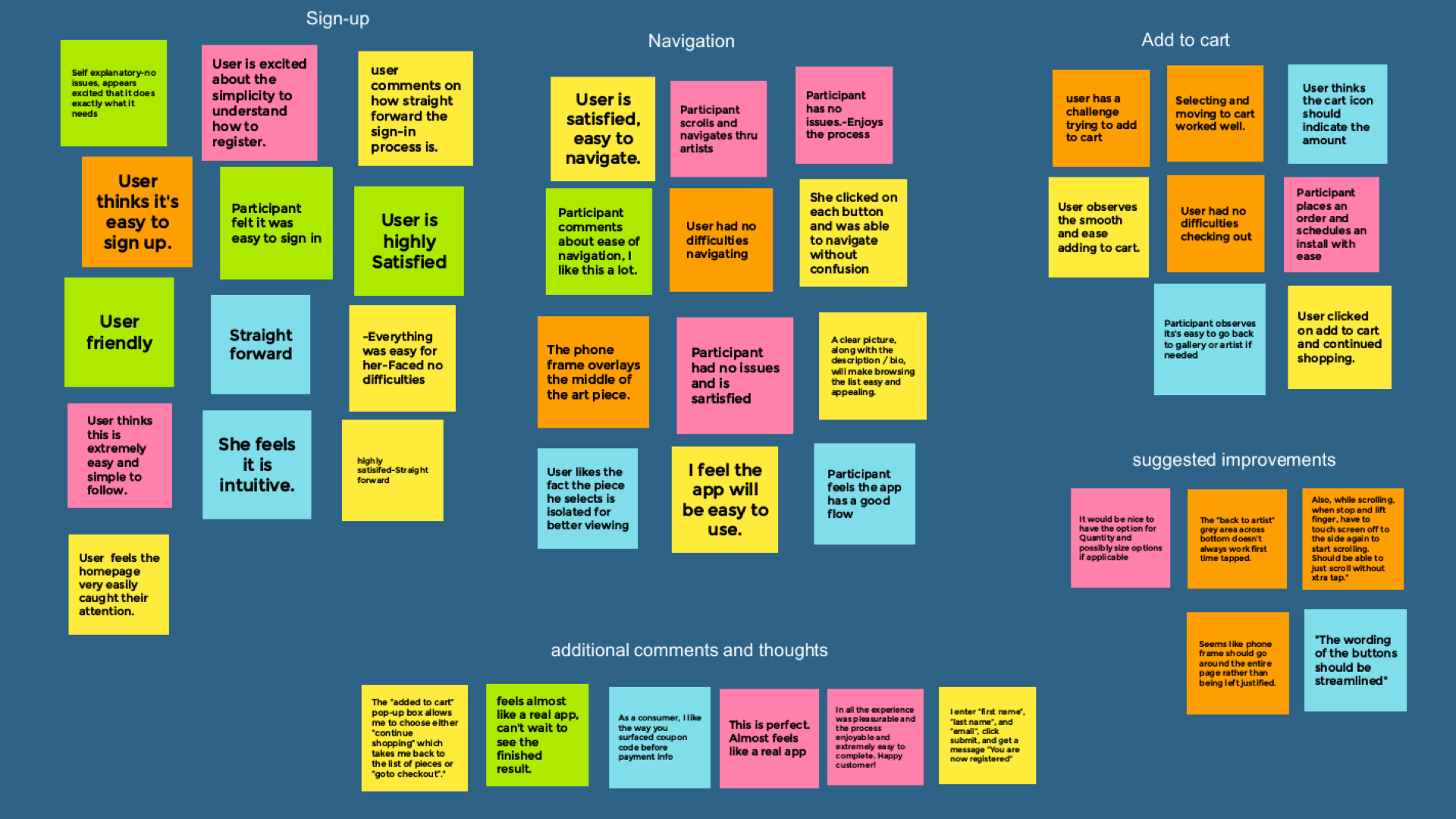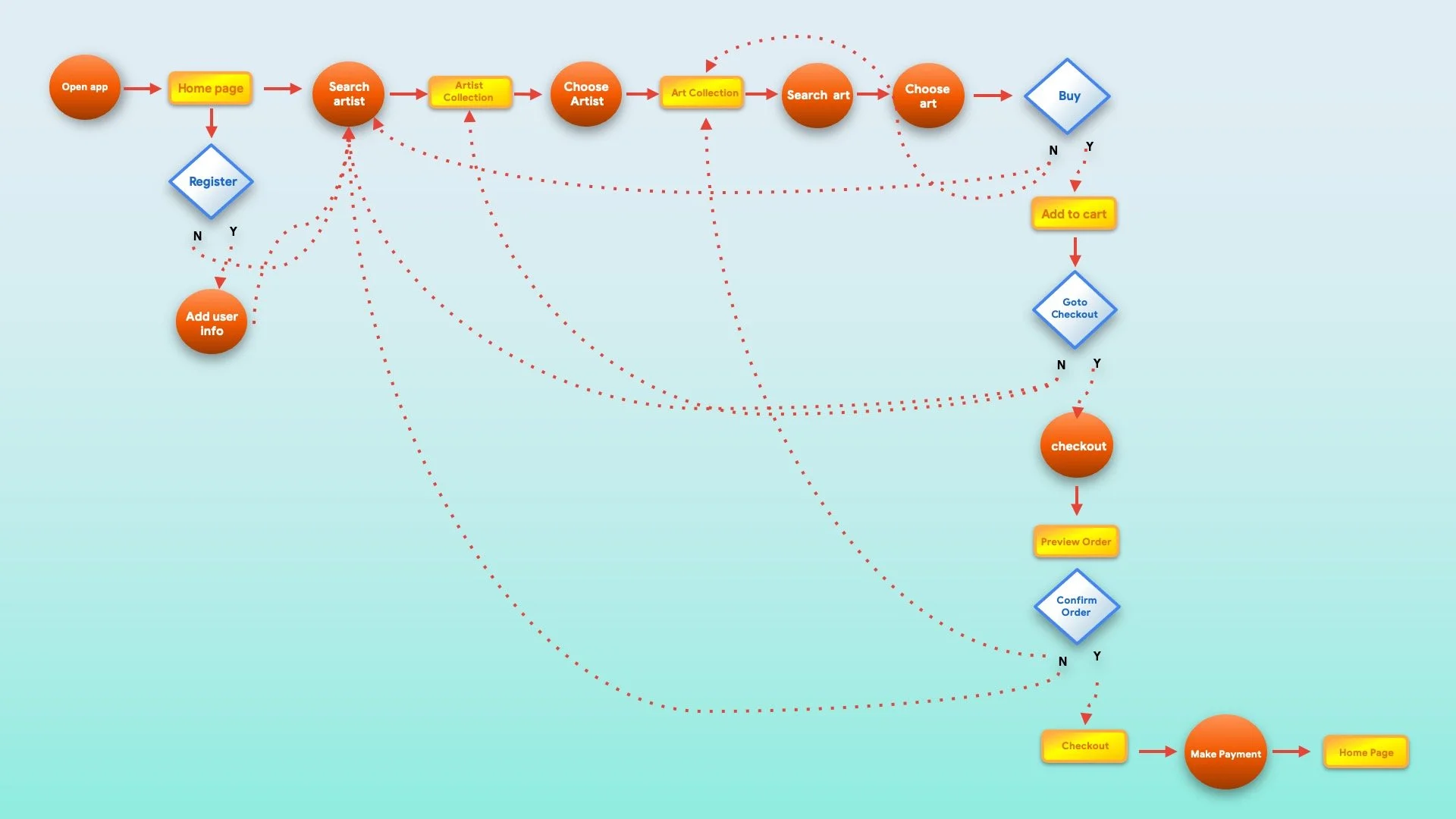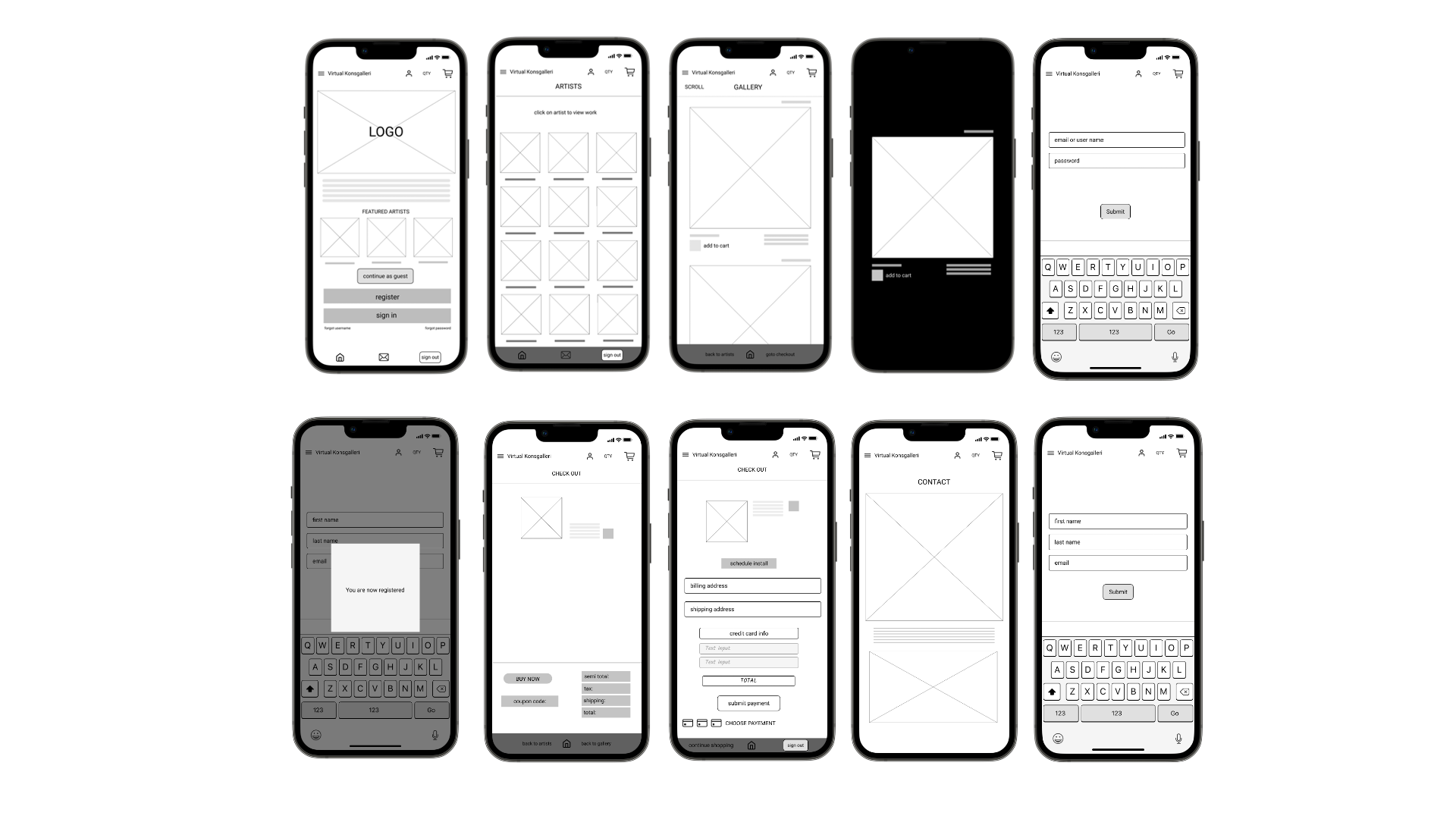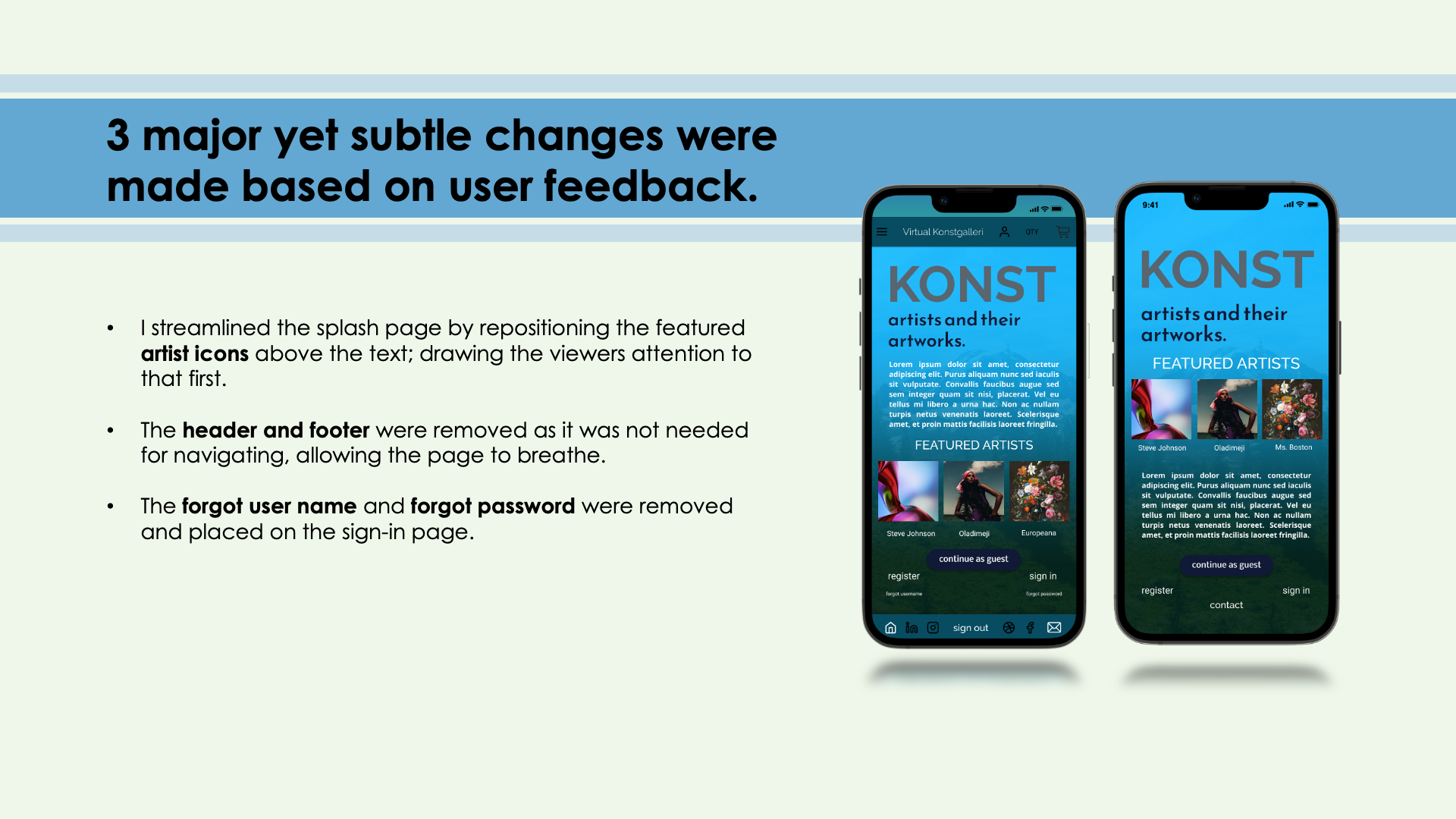Project Duration
Dec. 2021-Feb. 2022
Responsibilities
Conducted user research, paper and digital wireframing, ideation low and high-fidelity prototyping, usability studies, competitive audits, and design iterations.
Role
Solo student project for Google UX/UI Design Certification
PROBLEM
Time or travel constraints prevent the user from visiting an art gallery.
Working professionals have to juggle many tasks, whether raising a family or meeting the obligations of their workload. There seem is no work-life balance. My goal was to create a mobile app, where users can view and purchase art when they do not have the time to visit a gallery.
The Virtual Art Gallery app lets the user view the artist’s work.
SOLUTION
RESEARCH
I conducted phone interviews with 10 people and gathered qualitative data on their user habits. The primary user group was working professionals between the ages of 25-60 with an interest in art. Created empathy maps to gain a better understanding of user needs. The common problem stemmed from the limited time they had available to attend gallery openings consistently. Also, the pandemic contributed to the reduction of people going out.
The main problem they faced was the limited time they had available to attend gallery openings and the general location they lived.
USER INTERVIEWS
QUESTIONS:
1. When using a mobile app, what do you look for when it comes to usability?
2. Are there any features you find helpful or frustrating, if so, what would they be?
3. Could you describe your experience when looking for a particular product or service?
4. When do you think you’d use this product?
5. How much time do you spend on any given app?
6. Are there any features that you think you need but are missing in an app you may use?
TIME
Working professionals have many obligations that may prohibit them from attending a gallery opening.
PAIN POINTS
LOCATIONS
Long commutes played a role in not visiting some galleries.
PANDEMIC
Prohibited many working professionals from attending outings and social events.
Affinity Map
PERSONAS
Based on the results of my research, I created two user personas with unique objectives and interests.
Debra is a college professor who needs a virtual art gallery app to view artists' work and purchase art for her living room because her busy schedule prevents her from attending an art gallery.
Debra’s User Journey
As I placed emphasis on Debra’s journey, it was clear that she had some reservations about being at the gallery opening. Mainly having to wait to see an assistant as well as not having access to the artist’s bio. A stand-alone gallery app would be ideal in a situation like this.
Levi is a senior scientist and amateur astrophotographer with a busy schedule who wants to be able to view and study high-resolution images of the constellations to get a better look at what techniques were used to create the image.
User Journey
This is the essential map I created showing how the user can navigate through the app.
THE DESIGN PROCESS
Iterations
Paper Wireframes
I began brainstorming and sketching a series of iterations for the home screen. From there I took elements from different sketches combined and rearranged them in creating the final version.
Digital Wireframes
Based on my paper wireframe brainstorming sessions & crazy-8s and user feedback, I made further iterations.
Stickerboard
Usability Study Findings
ROUND 1
Easy to sign up, sign in or browse as a guest.
User can navigate easily between work and artist.
User can checkout at anytime or continue shopping.
ROUND 2
Users liked the experience and ease of use.
easy navigation from page to page.
Needed a shopping cart quantity notice.
The Outcome
Feel free to interact with the prototype
Accessibility Considerations
Used icons to simplify navigation.
Made sure I used clear large Imagery placed in a simple clean layout.
Provided easy checkout process and utilized more than one option to utilize the app.
Impact
I created this app to help users who want to view artists and their work more easily if they can’t visit a gallery or will inspire them to visit one.
Quote from user feedback
“The app would increase my access to the art gallery. With my busy schedule, I don’t have a great deal of free time to explore the gallery in person. The app would provide access conveniently.”
Conclusion + Takeaways
Creating my first app from conception to fruition was an exciting experience in which I learned a lot. I appreciate the considerations from the usability studies I conducted. It acted as a blueprint of progression. As the project is molded into a tool, I began to further understand the nuances of the decision process and how it helped me move forward.
I would say my shortcoming was how I approached the research process. The biggest challenge for me was knowing what questions to ask.
In retrospect, I would look for more resources to use in conducting future interviews. That also applies to the subsequent case studies I created.
What I learned and what could I improve upon?
Next Steps
In an effort to improve the user experience, I would like to create an AR version of this app that will allow the user to preview a work of art on their wall or any place in their home before purchasing.
Add a function to the app that the user could take to a gallery, scan a code next to an art piece and get information regarding the art and artist.













